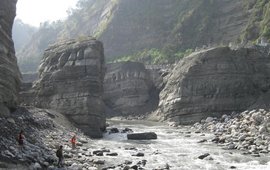AIRWAVES
An automated high resolution water sampler for environmental monitoring
Obtaining rain samples from remote locations is a tough challenge - not only to scientists. Hence we are developing an automated rain sampler that allows to detect minute changes in isotopic composition even after months in the field.



















